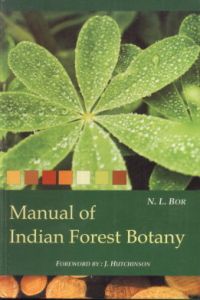
Contents: Preface. The vegetable kingdom. Cryptogams. Phanerogams. Phylum I: Gymnospermac: i. Bennettitales. ii. Cycadofilicales. iii. Cycadales. iv. Ginkgoales. v. Cordaitales. vi. Coniferales. vii. Gnetales. Phylum II: Angiospermac: The progress of classification. Subphylum I: Dicotyledones. I. Lignosae: 1. Magnoliales. 2. Annonales. 3. Ebenales. 4. Laurales. 5. Dilleniales. 6. Coriariales. 7. Rosales. 8. Leguminosac. 9. Cunoniales. 10. Araliales. 11. Styracales. 12. Hamamelidales. 13. Salicales. 14. Myricales. 15. Fagales. 16. Juglandales. 17. Casuarinales. 18. Urticales. 19. Bixales. 20. Thymelaeales. 21. Proteales. 22. Pittosporales. 23. Capparidales. 24. Tamaricales. 25. Violales. 26. Polygalales. 27. Passiflorales. 28. Cucurbitales. 29. Cactales. 30. Tiliales. 31. Malvales. 32. Malpighiales. 33. Euphorbiales. 34. Theales. 35. Ericales. 36. Guttiferales. 37. Myrtales. 38. Celastrales. 39. Myrsinales. 40. Olacales. 41. Santalales. 42. Rhamnales. 43. Rutales. 44. Meliales. 45. Sapindales. 46. Loganiales. 47. Apocynales. 48. Rubiales. 49. Bignoniales. 50. Verbenales. II. Herbaceae: 51. Ranales. 52. Berberidales. 53. Aristolochiales. 54. Resedales. 55. Polygonales. 56. Chenopodiales. 57. Lythrales. 58. Primulales. 59. Sarraceniales. 60. Umbellales. 61. Campanales. 62. Asterales. 63. Solanales. 64. Personales. 65. Geraniales. 66. Boraginales. 67. Lamiales. Subphylum II: Monocotyledones. 68. Zingiberales. 69. Liliales. 70. Agavales. 71. Palmales. 72. Pandanales. 73. Graminales. Getting to know the trees. Appendix--Key to the families of dicotyledons. Index.
From the Preface: This book, which is meant for the student who has had his elementary course in botany, is the outcome of the course of lectures on Forest Botany delivered to students of the Indian Forest College at Dehra Dun, 1938-42. it is a book for the teacher and for the student for use in the classroom as well as in the field, particularly on tour. It has been compiled in the belief that the more flowering material (living or preserved) the student handles, the sooner he will realize how easy it is to use keys for running down families and species. He will get to know families by experience and, if he has an aptitude, for taxonomy, will acquire that flair which enables him to place a plant instinctively in the right family. Such gifts are not given to all, but practice can go a long way towards acquiring, if not infallibility, at least competence.
Once the family can be found the rest is easy. Keys to the genera are given and very often to the species of a genus. When known, bark and leaf characters are also described, for these are of great importance in the field. Uses to which the wood can be put, colour of latex, if any, and other interesting details are mentioned in the belief that if students can only be got to take an interest in their trees and shrubs during their period of study, they will maintain that interest throughout their professional lives. This book should not replace the local flora for which there will always be a demand; it is simply a Manual of Indian Forest Botany.